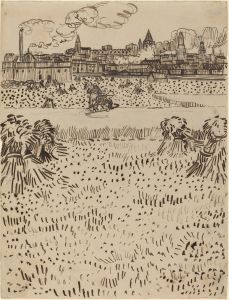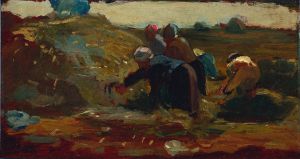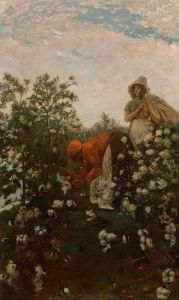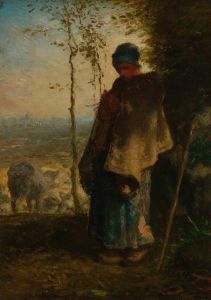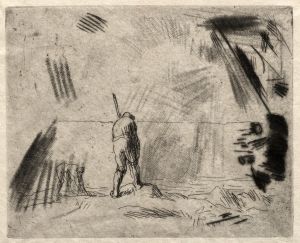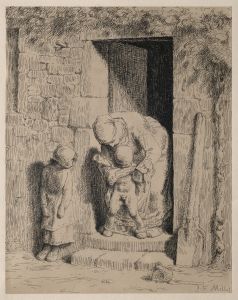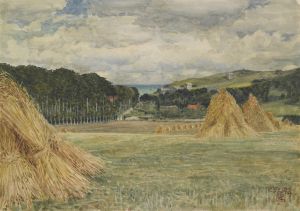
The Potato Harvest
A hand-painted replica of Jean-François Millet’s masterpiece The Potato Harvest, meticulously crafted by professional artists to capture the true essence of the original. Each piece is created with museum-quality canvas and rare mineral pigments, carefully painted by experienced artists with delicate brushstrokes and rich, layered colors to perfectly recreate the texture of the original artwork. Unlike machine-printed reproductions, this hand-painted version brings the painting to life, infused with the artist’s emotions and skill in every stroke. Whether for personal collection or home decoration, it instantly elevates the artistic atmosphere of any space.
Jean-François Millet's The Potato Harvest is an oil painting created in 1855, exemplifying the artist's focus on rural life and the dignity of labor. Millet, a French painter and one of the founders of the Barbizon School, is renowned for his depictions of peasant life, and this work is no exception. The painting portrays a group of peasants harvesting potatoes in a field, a scene that reflects the artist's deep connection to the countryside and his interest in the daily lives of working-class individuals.
The composition of The Potato Harvest is marked by its earthy tones and naturalistic style, which emphasize the physicality of the labor and the connection between the figures and the land. The peasants are depicted in various postures of work, bending and gathering the potatoes, which underscores the strenuous nature of their task. Millet's attention to detail in the figures' clothing and gestures conveys a sense of realism and respect for their toil.
This painting aligns with Millet's broader artistic themes, which often highlighted the struggles and resilience of rural communities in 19th-century France. His works were sometimes criticized for their focus on the hardships of peasant life, as they contrasted with the more idealized or romanticized depictions of rural scenes that were popular at the time. However, Millet's approach also garnered admiration for its honesty and emotional depth.
The Potato Harvest reflects the social and economic context of its time. The mid-19th century was a period of significant change in France, marked by industrialization and urbanization, which often marginalized rural populations. Millet's work serves as a reminder of the enduring importance of agricultural labor and the people who performed it, even as society shifted toward modernization.
The painting is housed in the Walters Art Museum in Baltimore, Maryland, where it remains a significant example of Millet's contribution to the Realist movement. It continues to be appreciated for its poignant portrayal of rural life and its ability to evoke empathy for the laboring class.
Millet's work, including The Potato Harvest, has had a lasting influence on art history, inspiring later artists such as Vincent van Gogh, who admired Millet's ability to capture the humanity and dignity of ordinary people. This painting remains a testament to Millet's skill as an artist and his commitment to portraying the realities of life in rural France.





